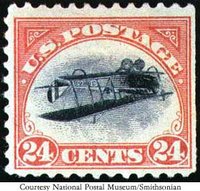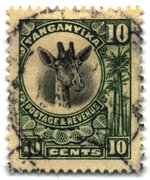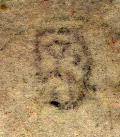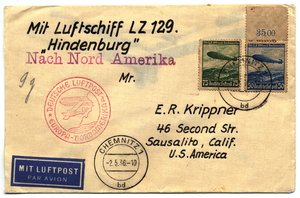Philately
|
|
Stamp_GB_Penny_Red_pl148_closeup.jpg
Philately is the study of Revenue or postage stamps. This includes the design, production, and uses of stamps after they are issued. Although many equate it with stamp collecting, it is a distinct activity. For instance, philatelists will study extremely rare stamps without expecting to own copies of them, whether because of cost, or because the sole survivors are in museums. Conversely, a stamp collector may choose to acquire and arrange the little pictures without being much troubled about their origin or usage. But in practice, a basic knowledge of philately will save the collector from spending 50 dollars for a stamp that is really worth only 20 cents!
Stamp_GB_Penny_Red_pl148.jpg
The coining of the word "philately" in its French form has been circumstantially attributed to Georges Herpin in the publication Le Collectioneur de timbres-postes, Vol. 1, November 15, 1864. It is formed from the Greek words philos (friend) and ateleia (exempt from charge, or "franked"), which is a stretch to relate to the study of stamps, but the alternatives of "timbrophily" & "timbrology" or "timbrologist" never caught on.
The origin of philately is in the observation that in a pile of stamps all appearing to be the same type, closer examination reveals different kinds of paper, different watermarks embedded in the paper, variations in color shades, different perforations, and other kinds of differences. Comparison with the issuing country's government records may or may not show that the variations were intentional, which leads to further inquiry as to how the changes could have happened, and why. To make things more interesting, thousands of forgeries have been produced over the years, some of them very good, and only a thorough knowledge of philately gives any hope of detecting the fakes.

One explanation for all the variation is that stamp printing was among the early attempts at large-scale mass production activities. Even in the 19th century, stamps were being issued by the billions, more than any other kind of manufactured object at the time.
| Contents |
Types of philately
Basic or technical philately, then, is the study of the technical aspects of stamp production and stamp identification. It includes the study of
- The initial stamp design process
- Paper (wove, laid, etc, and including watermarks)
- Printing methods (engraving, typography, etc)
- Gum
- Separation (perforation, rouletting)
- Overprints on existing stamps
- Forensic philately, especially the identification of forgeries

Topical philately is the study of what is depicted on the stamps. There are hundreds of popular subjects, such as
Interesting aspects of topical philately include design mistakes (such as use of the wrong picture on a US stamp honoring Bill Pickett), design alterations (for instance, the recent editing out of cigarettes from the pictures used for US stamps), and the stories of how particular images came to be used (one US stamp from the 1920s shows a Viking ship apparently flying an American flag, but this was not a mistake).
Postal history concentrates on the use of stamps on mail. It includes the study of postmarks, post offices, and the process by which letters are moved from sender to recipient, including routes and choice of conveyance. A classic example is the Pony Express, which was the fastest way to send letters across the United States during the few months that it operated. Covers that can be proved to have been sent by the Pony Express are highly prized by collectors.
Cinderella philately is the study of objects that look like stamps but aren't stamps. Examples include Easter Seals, propaganda labels, and so forth.
The results of philatelic study have been extensively documented by the philatelic literature, which includes many books and nearly 15,000 different periodical titles.
Philately is basically an activity of reading and study, but the human senses typically need augmentation. The stamps themselves are handled with stamp tongs so as preserve them from large, clumsy, and possibly greasy fingers. A strong magnifier reveals details of paper and printing, while the odontometer or perforation gauge helps distinguish a "perf 12" from a "perf 13".

While many watermarks can be detected merely by turning the stamp over, or holding it up to the light, others require the services of watermark fluid, a volatile and often toxic substance such as benzene (the active ingredient in common lighter fluid), carbon tetrachloride or trichloro-trifluoro-ethane that "wets" the stamp without dissolving gum or ink. Other techniques, such as using coloured light filters have been attempted in an effort to avoid the use of toxic substances.
Experts evaluating the authenticity of the rarest stamps use additional equipment such as fluoroscopes.
See also
Cover_US_philatelic_1925.jpg
Organizations
- American Philatelic Society
- American Topical Association
- Australian Philatelic Federation
- National Philatelic Society (UK)
- Royal Philatelic Society London
- Royal Philatelic Society of New Zealand Inc (http://www.wnc.quik.co.nz/rpsnz/rpsnz.htm)
- Académie Européenne de Philatélie
- Fédération Internationale de Philatélie
Reference
- L.N. Williams, Fundamentals of Philately (American Philatelic Society, 1990) ISBN 0-933580-13-4
- Richard McP. Cabeen, Standard Handbook of Stamp Collecting (Harper & Row, 1979)
External links
- philately.com (http://www.philately.com)
- UL Philately (http://www.ukphilately.org.uk/)
- OSTLAND (http://www.geocities.com/vernondalhart2002/ostland_1.html)
- Joseph Luft's famous link collection (http://my.execpc.com/~joeluft/resource.html)
- Stamp Collecting at Glassine Surfer (http://www.glassinesurfer.com)
- Stamp Forgery Guide (http://www.filatelia.fi/forglinks/index.html) (Selected web links to forgery descriptions and a comprehensive forgery literature bibliography.)
- Stamp2.com (http://www.stamp2.com) The world's ultimate philatelic portal.de:Philatelie
es:Filatelia eo:Filatelio eu:Filatelia fr:Philatélie id:Filateli it:Filatelia lt:Filatelija nl:Filatelie pl:Filatelistyka pt:Filatelia ru:Филателия sl:Filatelija fi:Filatelia sv:Filateli

